April 2013 Rising Stars
In March, APS Began a multi-part series profiling Rising Stars in psychological science. This month, we highlight more young luminaries poised to revolutionize the field. In upcoming issues we will continue to profile these outstanding stars.
Andy Baron
Marc Berman
Raphael Bernier
Philipp Kanske
Sangeet Khemlani
Edward Lemay
Kristen Lindquist
Christin M. Ogle
Elizabeth Page-Gould
Ruchika Prakash
Marjorie Rhodes
Karen M. Rodrigue
Kristin Schneider
Bob Spunt
Peggy L. St. Jacques
Kate Sweeny
A. Janet Tomiyama
Tessa West
Jamil Zakia
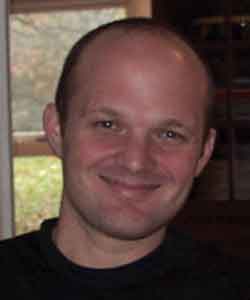 Andy Baron
Andy Baron
University of British Columbia
http://childdevelopment.psych.ubc.ca
What does your research focus on?
My research focuses on the development of intergroup cognition from infancy through adolescence. In particular, I examine the development of intergroup attitudes and stereotypes across implicit and explicit levels of analysis. My work also examines how children’s conceptual representations of group membership (as an ingroup or an outgroup member) develop across these years and how such representations constrain a variety of psychological processes including categorization, induction, evaluation, memory, and perception. My work also aims to characterize which aspects of intergroup cognition are experience-independent and how such knowledge is shaped by enculturation.
What drew you to this line of research and why is it exciting to you?
Since my early years as an undergraduate at the University of Michigan working with Drs. Oscar Ybarra and Eugene Burnstein, I have been fascinated with understanding the psychology of social-cognition. Humans spend most of their time interacting with conspecifics, directly and indirectly, and much of our mental life is spent thinking about these interactions (past, present, and future). Despite the significance of social-cognition in everyday life, the cognitive and cultural origins of such processes leave many questions unanswered. Indeed, children provide a unique window into understanding the cognitive foundations of intergroup cognition (e.g., the extent to which prejudice and discrimination is an automatic feature of how the mind processes information). I believe that the study of social cognitive development will pave the way for producing real change in adult behavior, especially in the domain of intergroup cognition where attitudes and stereotypes are known to have a profound influence.
Who were/are your mentors or scientific influences?
I really credit Mahzarin Banaji and Susan Carey for their independent roles in shaping my intellectual appreciation for and understanding of intergroup cognition and conceptual development. I was incredibly lucky to have both of them serve as mentors during my graduate studies at Harvard and their support has been invaluable to my growth as an intellectual, a scientist, a teacher, and a person. In addition, Mahzarin was particularly influential as a model for her commitment to social justice education and the translation of science through community outreach. Inspired by her decades of engagement and service, at the University of British Columbia I established a community-based research laboratory at Science World, a public science center where visitors have an opportunity to observe cutting-edge science in action and can engage directly with researchers studying cognitive development to learn more about the scientific method (see www.scienceworld.ca/lab).
What’s your future research agenda?
I have several goals. First, I will continue to unpack the mechanisms involved in the development of intergroup cognition with a particular focus on identifying the building blocks of social categorization in infancy and early toddlerhood. Similarly, I plan to identify the cognitive mechanisms underlying the acquisition of intergroup attitudes and stereotypes in early childhood, and how such representations interface with infants’ burgeoning understanding of the social world. Second, I plan to characterize the development of the implicit associative system. Whereas my current work has charted the development of implicit attitudes, current and future work will examine what domain-general and domain-specific processes underlie the acquisition and development of implicit associations (attitudes and stereotypes) with a particular emphasis on identifying the developmental trajectory of such associations. Third, I plan to continue my work examining the development of children’s conceptual representations of group membership. Fourth, I plan to continue building a platform for the public dissemination of scientific knowledge through my research partnerships with area science centers and children’s museums that will hopefully serve as an international model for increasing science literacy among children and their adult caretakers.
What publication are you most proud of?
Baron, A. S., & Banaji, M. R. (2006). The development of implicit attitudes: Evidence of race evaluations from ages six, 10 and adulthood. Psychological Science, 17, 53–58.
I am probably most proud of my very first publication for several reasons. First, it was my first publication and that always will hold a special place. Second, it was among the first in the field to demonstrate that a) implicit attitudes could be measured, b) that children have acquired them surprisingly early in development, and c) that the magnitude of these implicit attitudes appears to undergo very little change across development, a rather surprising and counterintuitive finding given most theories of implicit social cognition at the time. This paper also introduced the Child IAT, a now well-used procedure for measuring implicit associations in children ages five and older. Much of my work (and publications since) has built upon these early findings to produce a more comprehensive model of the development of implicit social cognition. Thus, this publication was foundational for my own research program as well.
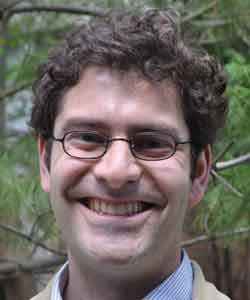 Marc Berman
Marc Berman
University of South Carolina
Rotman Research Institute at Baycrest, Canada
www.psych.sc.edu/faculty/Marc_Berman
www.huffingtonpost.ca/marc-berman/
What does your research focus on?
I focus on understanding the interaction between individual psychological processing and environmental factors that give rise to human behavior. My research has two main lines. In one line of research I study how external environments, such as the physical environment and social environment, affect human behavior. For example, I’m currently studying how interacting with different environments, such as natural environments, can improve cognitive functioning and how sustained exposure to more natural spaces can positively impact physical and mental health.
In my second line of research, the focus is on assessing individual cognitive, affective, and neural processing, which I term the “internal environment.” For example, we’ve found that individuals diagnosed with major depression have more “noisy” neural networks when attempting to remove irrelevant information from working-memory, which is related to depressive rumination. I’m also seeking to draw these two research lines together, and recently we’ve shown that interacting with nature can be therapeutic for individuals diagnosed with major depression. In both lines of research I employ multivariate statistics, computational modeling, neuroimaging, and behavioral experimentation.
What drew you to this line of research and why is it exciting to you?
I became interested in the field of psychology and the study of the human mind because of my grandparents’ lives and experiences. My grandparents on my father’s side of the family are Holocaust survivors and I grapple with how humans can do so much harm to other humans. I believe that there is no field of inquiry more important than the study of human behavior and the human mind. It is also amazing to me how my grandparents, who survived such horrific experiences, can continue to this day to be loving and open-minded people. You would never know what they went through on meeting them. It speaks to how resilient they are and, again, how incredibly complex and unique the human mind is. My maternal grandmother has also been an inspiration to me through her quiet morality, strength, and resilience in raising four children on her own after the much too early passing of my maternal grandfather. My grandparents and their experiences have inspired me to study the mind and it is my hope that, with a better understanding and quantification of the interactions between individual psychological processing and the environment, we will make huge strides in improving society and overall human well-being.
Who were/are your mentors or scientific influences?
I’ve had so many mentors/scientific influences that have helped me along the way. I’ll start in chronological order. Yili Liu at the University of Michigan sought me out, identified my scientific passions, and helped me to get on a research path and was my co-advisor throughout graduate school. Doug Noll, Luis Hernandez-Garcia, and Scott Peltier first introduced me to this incredible technology, fMRI, which allows one to see thought in action in the brain. As Doug once told me, it’s about as close to science fiction as you can get. Doug helped to get me in touch with John Jonides, who would become my co-advisor in graduate school. John taught me the nuts and bolts of what it takes to be a psychological scientist and his enthusiasm for science still inspires me to this day. I owe John so much. Steve Kaplan got me interested in simple solutions to complex problems and, in particular, how interacting with nature could be beneficial to human psychological functioning. Steve taught me to see outside the box and to be true to myself — that I did not need to fit a particular mold. Ethan Kross helped to get me involved in many exciting and unique projects, and I’ll always value all of our conversations both about science and other subjects. Rick Lewis, Bernadine Cimprich, Patti Reuter-Lorenz, Ian Gotlib, Patty Deldin and Rich Gonzalez all have had a significant impact on my career. I could not have asked for a better post-doc advisor than Randy McIntosh. Randy has given me the freedom to work on problems that interest me and I’ve learned so many new computational tools from working in his lab. I’ve also learned a great deal from Stephen Strother and Tomas Paus. Tomas has taught me to think about psychological problems from a strong physiological perspective. In addition, I’ve been drawn to his population neuroscience approach and he has encouraged me to pursue my environmental neuroscience approach.
What’s your future research agenda?
I would like to see my two research lines merge closer together, which is beginning to occur. We’re now starting to examine the neural consequences of the interactions with different environments and how sustained exposure to more natural vs. more urban environments impacts psychological and physical health. We’ve also begun to quantify neural efficiency in novel ways and the relationship between neural efficiency and self-control, and I’m eager to see whether neural efficiency can be a biomarker for other behaviors. Lastly, I’m eager to incorporate genetics/epigenetics into my research as it dovetails nicely with my research goals.
What publication are you most proud of?
We just recently had a paper accepted: Berman, M. G., Yourganov, G., Askren, M. K., Ayduk, O., Casey, B. J., Gotlib, I. H., Kross, E., McIntosh, A. R., Strother, S. C., Wilson, N. L., Zayas, V., Mischel, W., Shoda, Y., & Jonides, J. (in press). “Dimensionality of brain networks linked to lifelong individual differences in self-control.” Nature Communications.
This research has a lot of interesting elements. The sample that we studied was an incredible longitudinal sample from Walter Mischel’s original delay of gratification marshmallow studies. These participants were four years old when they were first studied, and have been tracked for more than 40 years. We scanned them while they performed a number of cognitive tasks and found that we could differentiate the high-delayers (children who delayed eating the marshmallow to receive increased rewards later) and low-delayers (children who did not delay eating the marshmallow) by how efficient their brain networks were when controlling the contents of working memory (high-delayers were more efficient than low-delayers). We could also accurately classify high- and low-delayers based on their brain networks when performing the task. This project was a large endeavor, with many years of work, and it was exciting to combine some novel multivariate neuroimaging analyses to a far-reaching behavioral phenomenon of interest to many people in differing areas of psychology.
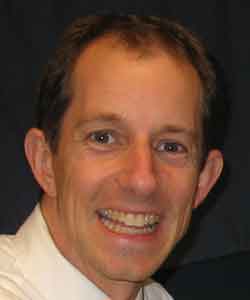 Raphael Bernier
Raphael Bernier
University of Washington
http://faculty.washington.edu/rab2
What does your research focus on?
Broadly speaking my research focuses on autism spectrum disorders (ASD) — spanning etiology, neuroscience, diagnosis, and intervention. More specifically, I am interested in bridging the gap in our understanding of the relationship between putative causal genetic events, neurological underpinnings of deficits in social cognition, the behavioral presentation of ASD, and how to intervene to address the challenges in social cognition.
What drew you to this line of research and why is it exciting to you?
In my previous clinical career, my focus was on the treatment of children with significant emotional and behavioral disturbances. I was struck by the challenges in social interactions common to most of the children with whom I worked. I wanted to explore and understand the biological contributions that unfolded within a developmental process to result in these social deficits. I thought that ASD, a disorder primarily of social cognition, was the perfect way to study this. When I made the career switch, one of the first things I noticed about research in ASD was the involvement of parents and families in the research process; their support and investment energizes my own devotion to this clinical research.
Who were/are your mentors or scientific influences?
When I made the switch strictly from clinical work with children and families to clinical research, I was fortunate to jump into the field of ASD research under the mentorship of Dr. Susan Folstein. As one of the pioneers of the genetics of ASD, her tutelage paved the way for my career in ASD. Then, as a doctoral student I had the opportunity to train under Dr. Geraldine Dawson. Under her guidance and mentorship, I gained a broad understanding of typical and atypical child development and learned how to conduct clinical research in ASD. Both of these mentors have served as an inspiration and guide for me in my clinical research pursuits. My other scientific influences are the children and families who come into the clinic or participate in my research studies. Each visit drives my curiosity and each question or concern raised by a parent spurs me to find more answers.
What’s your future research agenda?
I aim to remain actively involved in clinical research at the intersection of etiology, the brain, and treatment of autism spectrum disorders. I am interested in leveraging technological advances in genetics to study genetically defined subgroups in ASD to inform developmental biological pathways and guide intervention programs. Only through collaborations with families and incorporating expertise from multiple disciplines can we address the questions facing the field. I aim to continue my collaborations to advance our understanding and improve lives for families and individuals impacted by ASD.
What publication are you most proud of?
Bernier et al. (2010). Psychopathology, families, and culture: Autism. Child and Adolescent Psychiatric Clinics, 19, 855-867
I am most proud of my clinically focused, review paper focusing on the cultural influences on our perceptions and understanding of ASD. As a returned Peace Corps volunteer, I have a strong investment in considering cultural influences in not only how we diagnose and intervene with ASD, but also in how we conduct and interpret findings in developmental studies.
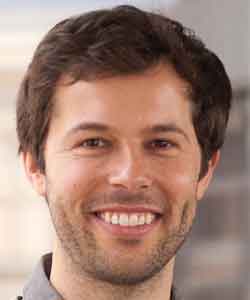 Philipp Kanske
Philipp Kanske
Max Plank Institute for Human Cognitive and Brain Sciences
www.kanske.de
www.cbs.mpg.de/staff/kanske-291
What does your research focus on?
My research interests evolve around the central topic of “emotion”. Specifically, my work tries to elucidate how emotions influence attention and cognitive control? How, in turn, emotions are modulated through cognitive processes? And what role the capacity to modulate emotions plays in understanding others? I study these questions in the context of psychopathology, using neuroscience tools to better understand the neural bases of alterations in depression, bipolar disorder, and other mental disorders.
What drew you to this line of research and why is it exciting to you?
Thinking about this question, I realized that I have always been strongly drawn to better understand emotions and how they are shared, but that I don’t really know why. I guess it’s always been more of a feeling. But I can come up with good reasons to keep investigating emotions, the most important being that well-being and long-term mental health seem to be predicted by good abilities to manage/deal with/accept your own emotions. They may, therefore, play a key role in understanding and improving mental disorders. And using neuroscience tools is tremendously exciting because it allows probing a whole range of layers of psychological phenomena
Who were/are your mentors or scientific influences?
My first steps into neuroscience were guided by Mike Posner, who always managed to integrate my small thoughts and ideas with the grand picture. My understanding of the connection of psychological and brain mechanisms is still very much influenced by his perspective. Later, I have been very fortunate to work first in Angela Friederici’s group and then directly in her group with Sonja Kotz at the Max Planck Institute for Human Cognitive and Brain Sciences in Leipzig. Also, I am greatly thankful for the time I spent in Michèle Wessa’s group, where I learned a lot about using neuroscience tools for clinical psychology questions. Very recently I started working with Tania Singer, who is a truly visionary researcher and inspiring mentor.
What’s your future research agenda?
Studying mental disorders inevitably raises questions regarding the plasticity of observed impairments, for example in emotion regulation capabilities. In the future I hope to be able to contribute to our understanding of (1) what interventions have the potential to induce change, (2) which functions exactly are malleable, and (3) what the neural mechanisms are that underlie change.
What publication are you most proud of?
Kanske P., Heissler J., Schönfelder S., Bongers A., & Wessa. M. (2011). How to regulate emotion? Neural networks for reappraisal and distraction. Cerebral Cortex, 21, 1379–1388.
It is my first paper on emotion regulation, a topic that interests me greatly and that I also believe to be highly relevant for a number of different psychopathologies. We compared two different techniques, reappraisal and distraction, which we found both to be effective in modulating subjective emotion and amygdala activity. Interestingly, however, the neural networks that achieve this regulating effect are not the same. In a couple of follow-up studies we could show that the differentiation between these techniques is critical for our understanding of impaired emotion regulation in depression and bipolar disorder.
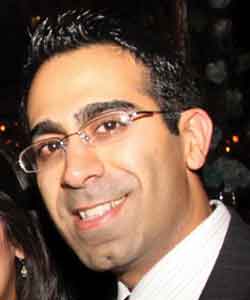 Sangeet Khemlani
Sangeet Khemlani
Navy Center for Applied Research in Artificial Intelligence, Naval Research Lab
http://mentalmodels.princeton.edu/skhemlani
http://www.nrl.navy.mil/aic/iss
What does your research focus on?
My research examines the mental representations and cognitive processes underlying deductive reasoning, creative thinking, and abductive explanations. A major challenge is to explain why people are predictably poor on some tasks, e.g., making certain deductions or estimating probabilities, but extraordinarily skilled at others, e.g., devising explanations. My collaborators and I think that the answer to this question is that mental simulations are the basis of high-level thinking.
What drew you to this line of research and why is it exciting to you?
Studies of logic and computer science: programming a computer is a way of making a hunk of metal do your thinking for you. But there’s a big gap between what current programs can reason about and the common sense thinking of everyday life. So, I investigate how people reason in order to narrow the gap between the two.
Who were/are your mentors or scientific influences?
Nobody’s had a bigger impact on the way I think and do research than Phil Johnson-Laird, who was my graduate advisor and remains a close collaborator and friend. Sam Glucksberg and Danny Oppenheimer were comparably instrumental in my graduate training, in no small part because of their contagious sense of humor. Greg Trafton, my postdoc advisor, maintains a very exciting interdisciplinary research environment. If I know anything about linguistics, it’s from talking to Adele Goldberg and Sarah-Jane Leslie. And I probably wouldn’t have considered research as a career without the encouragement and advice from Kostas Arkoudas, Selmer Bringsjord, Wayne Gray, Hans Neth, and Bram van Heuveln, my mentors as an undergraduate.
What’s your future research agenda?
I’ll continue to build and test theoretical and computational systems of how reasoners construct mental simulations to solve complex reasoning problems. One major project I’ve been working on is the development of mReasoner, a unified computational cognitive model of deductive, explanatory, and probabilistic reasoning. Another project is to study how reasoners collaborate with each other to solve problems. This project makes use of autonomous robots as programmable confederates in psychology studies.
What publication are you most proud of?
My recent paper, “The probabilities of unique events” in PLoS ONE in 2012. No theory at present can explain how people systematically estimate probabilities of unique, real events, such as the probability that the UK will leave the EU by 2020. The idea we proposed is that reasoners build analog magnitude representations to convert evidence — in the form of mental simulations — into probability estimates. The project synthesizes work from disparate fields such as developmental cognitive neuroscience, judgment and decision making, and reasoning, and it uses a novel experimental methodology to test the predictions of a computational model.
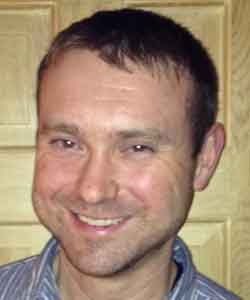 Edward Lemay
Edward Lemay
University of New Hampshire
http://lemay.socialpsychology.org
What does your research focus on?
I have a number of research interests related to interpersonal relationships. One line of research examines motivated cognition within the context of relationships, especially how motivation may bias perceptions of partners’ care, commitment, and regard. In a related line of research, I am examining the motivation to be valued by partners and its impact on interpersonal behavior. Finally, in a third line of research, I am examining how people manage relationships with chronically insecure and emotionally unstable relationship partners.
What drew you to this line of research and why is it exciting to you?
I have always been intrigued by social interaction and wondered why some relationships seem to work and others seem so problematic. As an undergraduate, I read The Social Animal by Elliot Aronson and was fascinated and excited to learn that these issues are legitimate targets of scientific inquiry. This is an exciting field for me because I believe interpersonal relationships are enormously important for understanding psychological functioning, and that many of the ways in which our functioning depends on interpersonal relationships still await discovery. In addition, with a focus on the interplay between two individuals (i.e., interpersonal processes examined in dyadic studies), the study of interpersonal relationships demands a complexity that I find captivating.
Who were/are your mentors or scientific influences?
As an undergraduate at Worcester State University, Pearl Mosher-Ashley initially involved me in research and helped me see research as a feasible career. I don’t know what I would be doing today if we didn’t cross paths. At Rutgers, where I earned my master’s degree, I worked with Richard Ashmore, who was an attentive mentor and taught me the importance of diligence, creativity, and theoretical thinking. For my dissertation, I worked with Peggy (Margaret) Clark at Carnegie Mellon University and then at Yale University. I couldn’t have hoped for a better graduate advisor. Working with Peggy was perhaps the biggest lucky break of my career. She was generous with time, data, money, authorship, and space. She taught me how to think big and how to conduct programmatic research. She supported and cultivated my ideas, even when they were only tangentially related to her own work. She was warm and approachable, despite being a luminary in the field. Although they were not formal advisors, Sheldon Cohen, Jack Dovidio, and Brooke Feeney have been supportive mentors as well.
In addition, many other psychologists have influenced my thinking. Some of the most notable influences include John Holmes, Dave Kenny, Sandra Murray, Harry Reis, Caryl Rusbult, Jeff Simpson, and Bill Swann. Their work inspires me.
What’s your future research agenda?
There are many things I would like to do. I plan to continue to study motivated cognition in interpersonal relationships, distinctions between interpersonal confidence and interpersonal desire, effects of interpersonal goals on interactions and relationships, and effects of partners’ personality on relationship maintenance strategies. I find all of these areas to be captivating. In the long-term, there are many areas of psychology that would profit from a greater consideration of interpersonal relationships, and I would like to contribute to that theoretical and empirical integration.
What publication are you most proud of?
Lemay, E. P., Jr., & Dudley, K. L. (2011). Caution: Fragile! Regulating the interpersonal security of chronically insecure partners. Journal of Personality and Social Psychology, 100, 681–702.
This publication presents and tests a model of the interpersonal regulation of chronically insecure and emotionally volatile relationship partners. Multiple research methods were used to demonstrate that people “walk on eggshells” around insecure partners, and that this strategy may help maintain those partners’ perceptions of acceptance. I feel proud of this work because it underscores the importance of taking a dyadic approach. Personality dispositions that are traditionally thought to result in relationship insecurity (e.g., low self-esteem, attachment anxiety, proneness to anger and hurt feelings) do not predict insecurity when partners actively work to disconfirm negative expectancies and maintain interpersonal harmony.
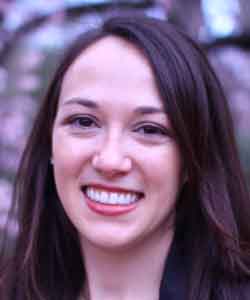 Kristen Lindquist
Kristen Lindquist
University of North Carolina at Chapel Hill
www.unc.edu/~kal29
What does your research focus on?
My research focuses on understanding the nature of human emotion. I’m broadly interested in understanding what emotions are, how they are created by the brain, and how they emerge during social behavior. My ongoing lines of research are united by the hypothesis that emotions are constructed of more fundamental psychological processes that are general to all mental states. In this view, emotions arise from the combination of basic positive and negative feelings, concept knowledge, and attention. I take a multi-method approach, using social cognitive methods, psychophysiology, neuropsychology and neuroimaging, to ask how these more fundamental psychological processes interact during the experience and perception of emotions.
What drew you to this line of research and why is it exciting to you?
I joined an emotion lab as an undergraduate at Boston College because I thought I wanted to be a clinician and emotion research sounded relevant. However, I quickly fell in love with basic science questions such as, “What is an emotion?” This research remains exciting to me because the study of emotion is a window into human experience in general. Understanding the nature of emotions can help us understand why some people flourish and others flounder, whether some kinds of mental states differ in kind from others (e.g., are emotion and cognition really different?), how other processes such as language influence emotion, and even how the brain creates the mind more generally.
Who were/are your mentors or scientific influences?
I’m grateful for the intellectual and personal support of many great mentors throughout my training and today. Lisa Feldman Barrett was my undergraduate and graduate mentor. She got me interested in emotion and taught me everything from the scientific method to how to be a woman in science. Perhaps most importantly, Lisa taught me to have a broad scientific toolbox and to never be afraid to ask big questions. I’m also grateful to Jim Russell and Wendy Mendes for their support and intellectual guidance throughout the years, and to my new colleagues at University of North Carolina at Chapel Hill.
What’s your future research agenda?
I’m particularly interested in how more fundamental psychological processes such as bodily states and knowledge about emotion interact to influence emotions. For instance, my lab is conducting studies investigating how bodily changes alter emotional experiences. We’re also investigating how individual differences in knowledge about emotion concepts can cause people to have different emotion experiences and perceptions. As a final example, we’re investigating how bodily changes and knowledge about emotion might come together differently during positive vs. negative emotional experiences.
What publication are you most proud of?
The publication that I’m most proud of is: Lindquist, K. A., Wager, T. D., Kober, H., Bliss-Moreau, E., & Barrett, L. F. (2012). The brain basis of emotion: A meta-analytic review. Behavioral and Brain Sciences, 35, 121-143.
In my opinion, this is my most impactful publication because it reports a meta-analysis of the neuroimaging literature on emotion. Our findings suggested that discrete emotions such as anger, disgust, fear, happiness, and sadness do not derive from consistent and specific activity in any anatomically defined brain areas. Instead, brain activity during emotion reflects more basic psychological processes such as bodily activity and concept knowledge activation.
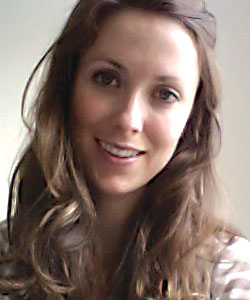 Christin M. Ogle
Christin M. Ogle
Duke University
What does your research focus on?
The focus of my research is on developmental factors that influence memory for traumatic life events and trauma-related psychopathology.
What drew you to this line of research and why is it exciting to you?
My professional interest in memory developed during my second year at Reed College while working under the mentorship of Dr. Daniel Reisberg. Dr. Reisberg and I worked on a project in collaboration with the Portland police bureau that was designed to examine local policy concerning procedures used to obtain eyewitness identifications. The project began at the height of widespread national attention on the use of DNA evidence to exonerate individuals wrongly convicted of crimes, oftentimes based on eyewitness testimony. It was during this project that I began to develop an appreciation of the fundamental role that memory plays in our everyday lives, and to broaden my understanding of the cognitive and social factors that contribute to the malleability of memory. The project was also my first exposure to the way social science research can impact the legal system and eventually improve the well-being of individuals. To this day, I continue to be inspired by the application of science to legal and policy issues.
Who were/are your mentors or scientific influences?
I have had the great privilege of working with many wonderful mentors who have contributed immeasurably to my professional development. I owe my deepest gratitude to my doctoral advisor, Dr. Gail Goodman, for her unwavering support and dedication to my training. Gail is one of the sharpest and most creative minds in developmental science, and it was a true honor to work under her direction. In addition to sharing with me her wealth of knowledge about the field, Gail taught me about the process of applying developmental research to legal and policy issues concerning child welfare. Through her persistent and rigorous approach to research, Gail set a unique example of determination, grace, and good humor that will continue to guide me throughout my career.
Dr. David Rubin has also strongly influenced my professional development. During my post-doctoral training at Duke, I have learned a great deal from David about research at the interface of cognitive and clinical psychology. In particular, working with David has expanded my knowledge of theoretical models of autobiographical memory that can be used to predict differences in individuals’ reactions to traumatic life events. David has also been a consistent reminder of the power of intellectual curiosity, and of how privileged we are as scientists to have the opportunity to pursue research questions that we are intrinsically motivated to answer.
Other scientists who significantly influenced my understanding of psychology in general, and of developmental science in particular, include Daniel Reisberg, Jennifer Henderlong Corpus, Phil Shaver, and Ilene Siegler. I am deeply indebted to each of these individuals for the time and resources they devoted to my training.
What’s your future research agenda?
My research will continue to examine the role of autobiographical memory in individuals’ reactions to traumatic experiences, as well as developmental factors that shape the course of trauma-related psychopathology. By extending my research to include older adults during my post-doctoral training at Duke’s Center for the Study of Aging and Human Development, I have begun to pursue this line of research from a lifespan development perspective. In my future work, I will continue to use a life course approach to examine mechanisms that promote trauma-related psychopathology. In particular, my work will focus on how the content and phenomenological characteristics of memories of traumatic events experienced throughout the life course relate to the persistence of negative post-traumatic outcomes. I also plan to further investigate individual difference factors, such as attachment and personality traits, which leave some individuals vulnerable and others resistant to the deleterious consequences of trauma exposure.
What publication are you most proud of?
Ogle, C. M., Rubin, D. C., & Siegler, I. C. (in press). The impact of the developmental timing of trauma exposure on PTSD symptoms and psychosocial functioning among older adults. Developmental Psychology.
The research included in this paper represents the integration of my doctoral training on the impact of childhood trauma on memory with my post-doctoral research concerning the long-term consequences of traumatic events encountered throughout the life course. The paper is in many ways a reflection of the time and effort that my mentors devoted to my professional development.
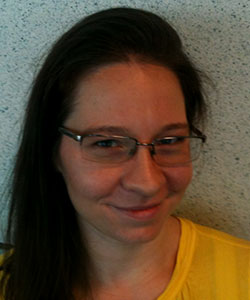 Elizabeth Page-Gould
Elizabeth Page-Gould
University of Toronto Scarborough
Professional Website: http://page-gould.com
Lab Website: http://embodiedsocialcognition.com
What does your research focus on?
Generally, I research how social interactions with other people — both friends and strangers — affect our understanding of the social world. More specifically, I focus on how friendship with people from different social groups (“cross-group friendship”) impacts intergroup processes. This is a relatively old question within the field of intergroup relations, but I have been examining it anew by applying or developing experimental paradigms that can test the causal role of diverse friendships on intergroup experience. I try to capture the highest resolution image of social interaction by taking a multi-method approach; most of my studies combine self-report, behavioral, and physiological measures. Given that I study social interaction and friendship dyads, I have developed particular expertise in multi-person psychophysiological recording and multilevel modeling.
What drew you to this line of research and why is it exciting to you?
There is an extent to which research is exciting, just in and amongst itself. I am incredibly grateful that people pay me to think up research questions, answer them, and then tell everyone else what I did. This may be, in part, because I did not know that being a psychological scientist was a career option when I entered undergrad. When I realized that we can extract meaningful signal from the noisy social world, I was hooked on trying to explain as much unexplained variance as I could. That being said, I have always been fascinated by the arbitrary nature of social hierarchies, and I love to watch people interact (perhaps all the more so in the weird social situations I create for them in the lab).
However, I am hoping you will indulge me having some fun with this question. I feel all humans should be motivated to understand more about successful intergroup relations, because, ultimately, we need to colonize other planets than Earth. In approximately 4 billion years, the Sun will grow to a red giant and its radius will extend beyond the orbit of the Earth. Approximately 1 billion years before that, the Sun will begin producing too little radiation to support mega-fauna on Earth. Therefore, we must leave this place; the Earth represents a single point of failure for humanity.
However, leaving Earth is a very challenging task; it is nothing short of rocket science. My opinion is that group inequality is one of the greatest barriers towards our species achieving this important goal. Group inequality hurts our likelihood of surviving until interplanetary colonization for two reasons: (1a) oppression reduces the total workforce available to innovate and (1b) oppression reduces the likelihood that a single genius who can solve our problem will rise to the top; and, (2a) we run the risk of killing each other before we leave Earth or (2b) if we only kill some people and not others, then the human species would be more susceptible to a single extinction event. At the risk of sounding grandiose, I am dedicated to research on intergroup relations, because we all need to work together to get off this rock.
Who were/are your mentors or scientific influences?
Intellectually, I have been most influenced by Kurt Lewin, Gordon Allport, John Cacioppo, Eleanor Rosch, Richard Lazarus, and Walter Mischel. The person who has most shaped me is my graduate mentor at the University of California Berkeley, Rodolfo Mendoza-Denton; his passion, contemplativeness, and diligence are a continuing inspiration to me. I then went onto do a postdoctoral fellowship at Harvard with the one-and-only Wendy Berry Mendes. Wendy has taught me so much, from deeply technical knowledge to expert social skills; she is, hands-down, one of the best players of the “game of life” that I have ever met. Back in the day, Vicki Helgeson shaped me as a scientist, and Joel Greenhouse and Howard Seltman shaped me as a statistician. There are so many friends and colleagues who have lifted me up along the way, and I am sorry for not being able to thank everyone who deserves it. Nonetheless, I want to give a particular shout-out to my intellectual brothers and sisters: Michael Inzlicht, Jennifer Goetz, Linda Tropp, Modupe Akinola, Wayne Chan, Lindsay Shaw Taylor, Michelle Goldman-Flythe, Mario Aceves, Alexander O’Connor, and Sang Hee Park. These days, I am grateful to have the thriving intellectual and social environment of the University of Toronto, both Scarborough and the tri-campus psychology department. Of course, it is impossible to separate my success from having two parents who both embraced lives of innovation and self-actualization. Most importantly, the brilliance, creativity, and generativity of my husband, Ian Dennis Miller, has filled my adult life with adventure, awe, and meaning.
What’s your future research agenda?
I keep spiraling further down the social interaction wormhole. Once you have the statistical tools for handling clustered observations (e.g., multilevel modeling) and you figure out how to collect simultaneous data from multiple people at once, the social world is your oyster. I am currently examining processes of physiological synchrony, which is a phenomenon whereby two people’s cardiopulmonary responses become synchronized while interacting with each other. I am curious as to how physiological synchrony develops within social interactions and what functional purpose it plays in social coordination. Ultimately, though, my heart is with intergroup relations, and so my research will always have the essence of intergroup relations.
What publication are you most proud of?
At least for now, my scientific baby is my one-study Journal of Personality and Social Psychology (Page-Gould, Mendoza-Denton, & Tropp, 2008), which was internally dubbed “the friendship study”. We paired Latino and Caucasian participants into same-ethnicity and cross-ethnicity friendship dyads and had them undergo a friendship manipulation with each other for three weeks. Over a series of friendship-building interactions, participants who were initially prejudiced showed decreasing stress reactivity — measured through reactivity of the stress hormone, cortisol — as they developed closeness with a cross-ethnic partner. After the friendship-building period was over, the participants who were prejudiced at the start of the study initiated significantly more cross-ethnic interactions in their daily lives after making a cross-group friend in the lab. There are many reasons why I am proud of this paper. The most important reason is the theoretical contribution; this research showed that making a new cross-group friend improves future contact experiences. We also incorporated the perspective of multiple ethnic groups at the same time, which is sadly still not typical in intergroup research. I also find the combination of experimental and longitudinal methods to provide a nice, one-two causal punch.
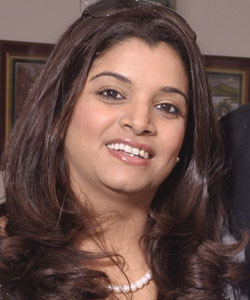 Ruchika Prakash
Ruchika Prakash
The Ohio State University
http://freud.psy.ohio-state.edu/lab/CNL/The_Lab.html
What does your research focus on?
I am involved in several lines of research, all of which are aimed at examining the effects of lifestyle factors on facets of emotional and cognitive control, the corresponding neural circuitry involved in these interrelated processes, as well as the overall functional neuroarchitecture of the brain. By examining both behavioral and neuroimaging data, my laboratory examines how variables like cardiorespiratory fitness and mindfulness disposition have the potential to explain variance in trajectories of cognitive decline, and be associated with altered patterns of neural activity and connectivity in healthy older adults and individuals with neurological diseases. Our final goal, of course, is to examine the malleability of these cognitive and emotional processes in response to such lifestyle-based interventions, such as exercise training and mindfulness-based cognitive training, thus improving overall quality of life.
What drew you to this line of research and why is it exciting to you?
This will sound clichéd, but the goal was and still is “to help people.” Being a clinical scientist, I have been intrigued by the variability in fundamental cognitive processes demonstrated by our clients and participants. What are some of the factors that promote successful aging? Why do some individuals show preserved cognitive processing, even in the face of significant neuronal insult? By identifying these psychosocial variables, can we design interventions that can provide us with an opportunity to preserve our controlled regulatory processes? I think all of these are exciting questions, both from a scientific, and a public health perspective. The economic burden associated with aging, and with various neurological diseases is enormous, in addition to having catastrophic costs for the individual and his or her family. In exploring these lifestyle interventions, we hope to directly inform future research and clinical practice in rendering efficacious methods of reducing cognitive decline in both healthy aging and pathological populations.
Who were/are your mentors or scientific influences?
I really have been fortunate enough to be surrounded by great thinkers and academics throughout my life. My parents, who are both lecturers at University of Delhi, India, always inculcated in me the passion for learning. I moved to the United States to pursue my passion and desire to learn more about clinical neuroscience and at the University of Illinois at Urbana-Champaign, where I received my doctoral degree, several mentors shaped my growth as a researcher and an individual. My graduate mentor, Art Kramer, was instrumental in shaping me as a researcher. From him I learnt (or rather attempted to learn), the skill of being able to dig deep into a problem, while still being able to multi-task on many other projects. He taught me the value of incorporating basic science research into the applied research I was interested in conducting, and really speaking to the theoretical formulations of the regulatory processes I hope to alter. Neal Cohen taught me the virtue of critical thinking, and incorporating varied literatures in the formulations of your questions and hypotheses. Howard Berenbaum and Wendy Heller helped me find my niche as a researcher and clinician conducting research at the intersection of clinical and health psychology, cognitive neuroscience, and social neuroscience. At Ohio State, my colleagues, Charles Emery and Janice Kiecolt-Glaser have helped me in navigating this complex world of academia, and the NIH! If I start making a list of the scientific influences that have informed my critical thinking and writing, we would be short of space. But to pick a few from history: Sigmund Freud,, Urie Bronfenbrenner, Donald Hebb; more contemporary: Mike Posner, Richard Davidson, Thich Nhat Hanh, Michael Gazzaniga, James Gross.
What’s your future research agenda?
Despite our field’s sophisticated understanding of cognitive control at both the behavioral and neural level, the health field’s capacity to translate these findings into pragmatic, efficacious remediation methods remains rather limited. One of our lines of research moving forward is to examine the monolithic construct of cognition within a unified framework of higher-order, regulatory control processes based on basic emotion-cognition interactions. By implementing training techniques, such as mindfulness-based cognitive training that is characterized by the self-regulation of attention, through a focal orientation to present-moment experiences, and non-reactivity to these experiences, the goal is to effectively promote emotional and cognitive control by fundamentally reducing cognitive vulnerability to reactive modes of mind. In the study of such emotion-cognition interactions, we aim to base our interventions and hypotheses on nuanced models of emotional and cognitive control. In addition, another exciting line of research is the examination of treatment interventions as a function of genetic polymorphism. Examining how lifestyle interventions might interact with our genetic make-up, might help explain the variance we see in transfer effects and will enable the adoption of more individual-based intervention programs in clinical work.
What publication are you most proud of?
Prakash, R. S., Snook, E. M., Erickson, K. I., Colcombe, S. J., Webb, M. L., Motl, R. W., Kramer, A. F. (2007). Cardiorespiratory fitness: A predictor of cortical plasticity in multiple sclerosis. NeuroImage, 34, 1238–1244
I would say that would be my first publication as the lead author. That was the first study I was involved in from bottom-up and it gave me a real sense of appreciation of the diligence, perseverance, critical thinking, and collaborative enterprise it takes to maneuver a study from the initial stage of conceptualization to the final stage of dissemination. That manuscript also got accepted without any major revisions (which was both a first and last for me) and thus provided me with the excitement and motivation that was critical to pursue a career in academia. In that study, we examined the association between fitness and processing speed, indexed by behavioral performance and neural activation in individuals with multiple sclerosis and laid the foundation for my interest in investigating the role of such lifestyle factors in mitigating cognitive decline.
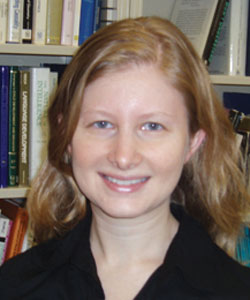 Marjorie Rhodes
Marjorie Rhodes
New York University
http://psych.nyu.edu/cdsc/home.php
What does your research focus on?
I am interested in how the human mind acquires, organizes, and uses abstract knowledge. In particular, my research aims to identify the basic conceptual organization that underlies our understanding of the social world and to discover how these concepts develop. Classifying people into categories (e.g., girls, babies, doctors) is a fundamental component of how we make sense of our social experiences. Thus, one of my key goals is to discover how social categories develop across childhood.
What drew you to this line of research and why is it exciting to you?
My initial research in graduate school examined the development of biological categorization —how young children parse the natural world into meaningful kinds (e.g., animal species). As I learned about the fundamental role of categorization in conceptual development, I began to wonder how categorization shapes children’s understanding of people and social behavior. I found this to be an exciting question for several reasons. First, because it is theoretically challenging — a successful theoretical account of social categorization must describe a conceptual system that is flexible enough to account for wide cultural variation, constrained enough to support the rapid acquisition of social categories in early childhood, and also powerful enough to dramatically shape a wide range of cognitive and behavioral processes. Second, because social categorization underlies some pervasive social problems (e.g., contributing to stereotyping, prejudice, and discrimination), understanding how social categorization develops can inform efforts to prevent the development of these negative phenomena.
Who were/are your mentors or scientific influences?
I have had wonderful mentors. Susan Gelman, my mentor in graduate school, exemplifies the essence of a good scientist. From her, I learned to think deeply about theory, creatively about research methods, and broadly about the role of developmental work in shaping our understanding of cognition. I was also fortunate to be mentored by Henry Wellman, who helped me to think about the relation of my work to our broader understanding of social cognition. They both set exceptionally high standards for science and mentorship, which I hope to carry with me throughout my academic career.
What’s your future research agenda?
I am currently fascinated by two key questions. First, of all the possible ways that people can be categorized (e.g., by gender, race, age, language, religion, interests, hair color, and so on), how do children determine which ways are meaningful and informative in their environment? We think that this process involves the interplay between intuitive cognitive biases and cultural input. To examine how this process works in detail, we are currently testing the roles of language, parent-child conversation, and cultural context in shaping the development of social categorization. Second, what is the basic conceptual organization of social categories? To answer this question, we are testing the types of inferences and behaviors that social categories support across development.
What publication are you most proud of?
I am very proud of our recent publication: Rhodes, M., Leslie, S. J., & Tworek, C. (2012). Cultural transmission of social essentialism. Proceedings of the National Academy of Sciences, 109, 13526–13531. This paper presents a three-year research endeavor examining the role of language in the development of social categorization. One thing that is special about this paper is that we were able to examine two complementary processes: (a) how hearing certain forms of language shapes the development of social categorization, and (b) how parental beliefs lead them to produce certain types of language in conversations with their children. Looking at both of these processes allowed us to describe a comprehensive picture of the role of language in the development of social categorization. I am also proud of this work because it is the product of a wonderful interdisciplinary collaboration with Sarah-Jane Leslie, a philosophy professor at Princeton. Because of our interdisciplinary approach, we were able to design our studies to have broad theoretical implications for cognitive science.
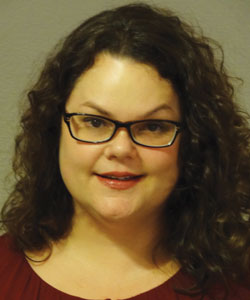 Karen M. Rodrigue
Karen M. Rodrigue
The University of Texas at Dallas
http://vitallongevity.utdallas.edu/directory/view/category/faculty/karen-rodrigue
What does your research focus on?
My research focuses on how age-related changes in the brain relate to the cognitive decline that we observe over the lifespan in healthy aging. We are particularly interested in how genetic and health factors work independently and interactively to modify neurocognitive aging. We use a wide variety of cognitive measures and structural and functional MRI, as well as PET amyloid imaging in our research.
What drew you to this line of research and why is it exciting to you?
The human brain is intrinsically fascinating. We are our brains, in a general sense. Understanding how the brain works allows us to function well, and knowledge of how it can change to impair our ability to think and solve problems as we age is critical. The most exciting aspect of this area for me is studying what factors underlie the individual differences in aging. Older adults show a significant range of cognitive performance. If we can identify the major factors that influence successful and unsuccessful aging, depending on the nature of those factors, we may be able to use this knowledge to actively promote healthy aging in people who may otherwise show clinically significant decline.
Who were/are your mentors or scientific influences?
My postdoctoral advisor, Dr. Denise C. Park, guided me through the process of writing a successful grant proposal, which was an enormously beneficial skill to acquire prior to beginning a tenure-track faculty position. Dr. Michael Devous, at UT Southwestern Medical center, trained me in PET amyloid imaging, which has become an important component of my work. I am most influenced by my PhD mentor, Dr. Naftali Raz of Wayne State University at the Institute of Gerontology in Detroit, who thoroughly prepared me for a career in research. The excellent training in neuroimaging, cognitive aging and statistical analysis is what has allowed me to be successful in my subsequent work. I am also grateful to my undergraduate professors at Loyola University in New Orleans, who gave me a solid foundation in writing skills and critical thinking to build upon, as well as helping me find my academic career path in the psychological sciences.
What’s your future research agenda?
It is my hope to make significant contributions to the longitudinal study of brain aging, which is critical for studying true change (vs. age differences) and understanding the temporal order of the age-related decline in a variety of brain and cognitive modalities. I plan to continue working on understanding the mechanisms and modifiers of brain aging in healthy adults and investigate how those brain changes impact cognition as we grow older.
What publication are you most proud of?
Rodrigue, K. M., Rieck, J. R., Kennedy, K. M., Devous, M. D., Diaz-Arrastia, R., & Park, D.C. (2013). Risk factors for β-amyloid deposition in healthy aging: vascular and genetic effects. Archives of Neurology.
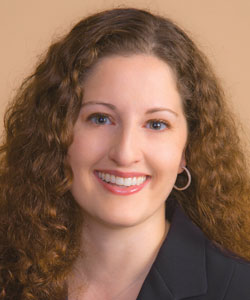 Kristin Schneider
Kristin Schneider
United States Department of Defense
www.linkedin.com/pub/kristin-schneider/21/933/b9a
What does your research focus on?
I conduct population-level longitudinal mental and behavioral health research studies for the United States Air Force. The focus of my research is on identifying early predictors of risk and resilience for outcomes ranging from the development of specific psychological disorders to suicidality. I’m particularly interested in examining the impact of early screening and intervention on the sequelae of traumatic exposure.
What drew you to this line of research and why is it exciting to you?
As a psychology intern at the Miami VA and later as a postdoctoral fellow at the San Diego VA, I observed firsthand the critical importance of early mental health intervention with military service members, and was confronted with the tremendous suffering that occurs when these problems go unaddressed for years or even decades, as is still too often the case. I love working with Veterans, but I was convinced that I could have a greater impact by engaging in operational research with the opportunity to influence military mental health policy with sound scientific practice. One of the most exciting aspects of this research is that the results have direct, practical, and often profound implications for the well-being of many people.
Who were/are your mentors or scientific influences?
I’ve been fortunate to work with so many great scientists over the years, including my graduate school advisor at Duke, Dr. Thomas Lynch, and my post-doctoral supervisor at the San Diego VA, Dr. Sonya Norman. Without question, though, the greatest influence on my research was Dr. Eli Flyer. Dr. Flyer was 88 years old when he recruited me to work with his research team in Monterey, California. He introduced me to the world of military psychology and shared his more than 60 years of experience with me. In the three years that I worked with Dr. Flyer, I learned more about the history of military screening and accession policy than I could have ever imagined. Dr. Flyer helped me to navigate the intricacies of military research, and to understand the cyclical nature of many of the problems that we face.
What’s your future research agenda?
I’m currently the principal investigator on two large Air Force studies. The first study examines clinical decision-making and long-term operational outcomes for trainees who report or display signs of psychological or behavioral problems during basic military training. The second study is an evaluation of the impact on later functioning of a post-deployment resilience program for Airmen who experience highly stressful deployments.
What publication are you most proud of?
My dissertation work has just been accepted for publication. I am enormously proud of this study and delighted that it will be published in Emotion.
Schneider, K.G., Hempel, R., & Lynch, T. R. (in press). That ‘Poker face’ just might lose you the game! The impact of expressive suppression and mimicry on sensitivity to facial expressions of emotion. Emotion.
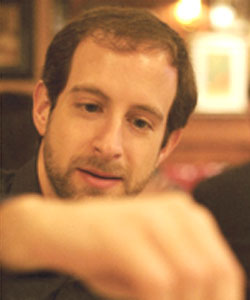 Bob Spunt
Bob Spunt
California Institute of Technology
www.its.caltech.edu/~spunt/
What does your research focus on?
My research seeks to understand the neurocognitive processes that allow humans to perceive and explain human behaviors. My theoretical approach is primarily drawn from attribution theories from social psychology, while my methodological approach is primarily drawn from the social and cognitive neurosciences, in particular, the use of functional magnetic resonance imaging. So far, my work has been concerned with characterizing the neural systems that enable the identification and causal explanation of goal-directed actions and expressions of emotion.
What drew you to this line of research and why is it exciting to you?
I have always been fascinated by the historically powerful idea that human nature is best characterized by two fundamentally different sorts of reality: material bodies and immaterial minds. This is the seed of my fascination with attribution, which bridges and ultimately entwines these two realities, giving us the ability to see the mind as embodied and the body as the expression of the mind. My work is ultimately an effort to understand how the brain allows us to make this link between bodies and minds.
Who were/are your mentors or scientific influences?
I credit much of my intellectual approach to human psychology to the existential phenomenologists Martin Heidegger and Maurice Merleau-Ponty. From studying them as an undergraduate, I discovered a view of human nature that is nearly axiomatic in social psychology; that the mind is at bottom and by necessity situated, shaping and shaped by the social world. Also as an undergraduate, I took a course with the neuropsychologist Dr. Robert Knight who taught me that a powerful approach to understanding the mind is understanding the brain. Thankfully, I found a doctoral mentor who shared my passion for both phenomenology and the brain, Matthew Lieberman. Matt took me, scattered and ungrounded, and molded me into a social cognitive neuroscientist. Currently, I am grateful to be receiving further molding from my postdoctoral mentor, Ralph Adolphs.
What’s your future research agenda?
My long-term research goal is to contribute to the development of a neurocognitive model of social causal attribution. Such a goal will require a systematic program of research examining numerous factors. For example, such a model will need to specify the conditions (both contextual and dispositional) that motivate attributional processing; consider how attributional processing varies by the type of event being explained (e.g., own vs. other behavior; action vs. emotion); and understand the conditions under which attributional biases are (or are not) corrected.
What publication are you most proud of?
Spunt, R. P., & Lieberman, M. D. (2012). Dissociating modality-specific and supramodal neural systems for action understanding. Journal of Neuroscience, 32(10), 3575–3583. doi:10.1523/JNEUROSCI.5715-11.2012
I am most proud of my 2012 publication in the Journal of Neuroscience. I see the study reported there as the culmination of my doctoral research examining the brain systems involved in making attributions about goal-directed actions.
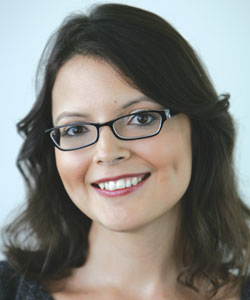
Photo courtesy of Micheline Pelletier.
Peggy L. St. Jacques
Harvard University
www.people.fas.harvard.edu/~pstjacques
What does your research focus on?
My research examines the cognitive and neural mechanisms that support autobiographical memory; how memory is affected by age and emotion, and how memory retrieval influences how memories are subsequently retrieved.
What drew you to this line of research and why is it exciting to you?
I was drawn to research on autobiographical memory because I love a good story, and what better to study than the stories of our lives. What continues to excite me about research on autobiographical memory are its many puzzles: How do daily moments become part of our autobiography? How can we suddenly remember a long-forgotten memory when provided with an appropriate retrieval cue? How do we sift through the past to retrieve a single event? How does a particularly vivid memory evoke a feeling of mental time travel? How does remembering the past shape the future? And, the biggest puzzle of them all — how are all of these aspects of memory represented in the brain?
Who were/are your mentors or scientific influences?
I have had many wonderful mentors that have influenced and supported me throughout the course of my research career. Brian Levine, my undergraduate thesis advisor at the University of Toronto, was a major influence on my decision to focus on autobiographical memory research. He taught me how to quantitatively analyze the episodic and semantic content of autobiographical narratives, which has strongly guided my theoretical understanding and thinking about autobiographical memory. Brian also suggested that I apply to graduate school at Duke University, where Roberto Cabeza and David C. Rubin jointly mentored me.
Roberto taught me how to interpret and write about functional neuroimaging data and how to understand age-related changes in the brain. David taught me a lot about autobiographical memory and how to run a productive “research factory.” I owe a great deal of my success in science to both Roberto and David, because of their generosity and encouragement.
Daniel L. Schacter, my post-doctoral advisor at Harvard University, has instilled in me the value of perfecting a research question and has provided me with the freedom to pursue those ideas.
I have also been strongly influenced by Morris Moscovitch and Tiffany Chow, with whom I worked as a research assistant before graduate school. Both demonstrated how to be an actively invested mentor. Along the way I have also learnt a great deal from the amazing students and faculty I have interacted with at the University of Toronto, the Rotman Research Institute, Duke University, Harvard University, the Summer Institute in Cognitive Neuroscience (aka “Brain Camp”), and various conferences and workshops.
What’s your future research agenda?
I am currently investigating how remembering the personal past influences subsequent memory retrieval in aging, the neural mechanisms that underlie retrieval-related updating mechanisms, and the role of sleep in supporting retrieval-related changes in memory.
What publication are you most proud of?
St. Jacques P.L., Dolcos F., Cabeza R. (2009). Effects of aging on functional connectivity of the amgydala during subsequent memory for negative pictures: A network analysis of fMRI data. Psychological Science, 20, 74–84.
I am most proud of this publication because of several reasons: 1) the research findings were some of the first on the neural mechanisms of age-related changes in emotional memory, 2) I learnt a great deal about functional MRI analysis in the process, and 3) it was the result of a great amount of determination and effort.
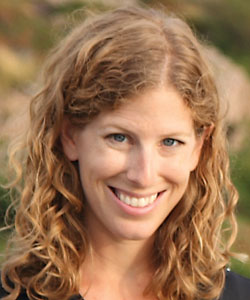 Kate Sweeny
Kate Sweeny
University of California, Riverside
http://faculty.ucr.edu/~ksweeny
What does your research focus on?
I have two primary lines of research, both of which address the question of how people manage difficult life events. My first line of research examines the understudied experience of awaiting uncertain news. People frequently face difficult waiting periods when they anticipate news regarding their own or their loved ones’ health, professional prospects, and academic outcomes, and my research reveals how people cope with this type of uncertainty and seeks to identify successful strategies for navigating painful waiting periods. My second line of research examines one particular type of difficult life event: seeking health care. My lab examines patients’ expectations for care, characteristics of physician-patient communication, and other psychosocial aspects of health care visits.
What drew you to this line of research and why is it exciting to you?
I love that my research is relatable because everyone experiences uncertainty at some point. I’m drawn to research topics that “hit a nerve” — topics that I wake up in the morning thinking about and that are fun to talk about with colleagues, friends, and family alike.
Who were/are your mentors or scientific influences?
James Shepperd was my graduate advisor, and I credit him with teaching me everything I needed to know to become a good researcher, colleague, mentor, and professor. I have also been fortunate to gain several amazing mentors in my current position, including Sonja Lyubomirsky, Robin DiMatteo, Howard Friedman, and David Funder, among others.
What’s your future research agenda?
I hope to get a better handle on why the experience of waiting for uncertain news is so difficult, often even more so than receiving bad news, and to figure out the best ways to “wait well.” I also hope to contribute to our understanding of successful approaches to (and pitfalls in) the psychosocial aspects of health care.
What publication are you most proud of?
Sweeny, K., & Krizan, Z. (in press). Sobering up: A quantitative review of temporal declines in expectations. Psychological Bulletin.
This publication represents the culmination of the first 10 years of my research, so it was exciting to take a step back and look at the complete picture of where that area of the field stands. It was also my first attempt at a meta-analysis, which entailed a steep learning curve and a lot of help from my fantastic collaborator, Zlatan Krizan. It was a great experience to write the paper, and I’m proud of the contribution we made with the final product.
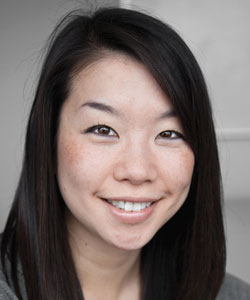 A. Janet Tomiyama
A. Janet Tomiyama
University of California, Los Angeles
www.dishlab.org
What does your research focus on?
Eating is the thread that ties all of my research together. I study the way we eat (whether that’s overeating in response to things like stress, or not eating, meaning fasting and dieting) and how that makes us healthy or unhealthy. As a health psychologist, I tend to examine biological outcome variables like the stress hormone cortisol, or telomeres, a biomarker of aging represented by the length of the caps that protect chromosomes. As a social psychologist by training, I also care deeply about stigmatized populations, and that manifests itself in my work focusing on weight stigma and health disparities in obesity.
What drew you to this line of research? Why is it exciting to you?
I was first fascinated by anorexia nervosa. As a person who will eat anything and everything — and ask for seconds — I was flummoxed by this disorder where individuals would willingly starve themselves. As I surveyed the landscape of American (and worldwide) health, however, I realized that I could make a bigger impact by studying the processes that govern overeating and dieting. Everyone eats, and practically everyone has been on a diet, and I love that I can talk to anyone, psychologist or not, about my research. My research is also exciting because in the middle of it is a giant paradox. Calorie restriction extends lifespan dramatically in other species like worms, fish, and rodents, and I’m researching whether that might be the case in humans as well. But on the other hand, a lot of my other work concludes that dieting probably isn’t good for your health. I’m sure it will take me many years to get to the bottom of that one.
Who were/are your mentors or psychological influences?
I am so lucky to have a career surrounded and supported by strong, brilliant women scientists. Traci Mann, my graduate advisor and favorite person on earth, taught me that science was fun. This was a precious gift, because working now never feels like a chore. Elissa Epel, my postdoctoral advisor, is my hero because she bravely chased a risky hypothesis — that psychological stress could be linked to something as tiny as a cluster of base pairs on the end of a strand of DNA — and single-handedly launched a new field of research. Traci and Elissa are alike in that they are meticulous methodologists, scarily smart, and above all warm and lovely individuals. My academic treasure chest is filled with other eminent female role models: Nancy Adler, Gretchen Chapman, Mary Dallman, Barbara Laraia, Brenda Major, and my UCLA colleagues Julie Bower, Naomi Eisenberger, Chris Dunkel-Schetter, Rena Repetti, Jenessa Shapiro, Annette Stanton, and Shelley Taylor.
To what do you attribute your success in the science?
I think I’ve greatly benefited from the right-place-at-right-time phenomenon. Health psychology is a rapidly growing field. There is an obesity “epidemic.” Funding agencies are prioritizing interdisciplinary research. These things have conspired to make my work particularly relevant. My mentors and colleagues can take the rest of the credit. The only thing I could attribute to myself is that the first thing I do every morning is write for an hour. And getting a flu shot every year.
What’s your future research agenda?
Eating is such a wonderful, pleasurable thing, and it gets a bad rap. I hope to pursue research that tests how we can harness the power of eating to make our lives healthier and happier.
What publication are you most proud of?
Mann, T., Tomiyama, A. J., Lew, A. M., Westling, E., Chatman, J., & Samuels, B. (2007). Medicare’s search for effective obesity treatments: Diets are not the answer. American Psychologist, 62, 220–233.
This paper sparked my motto of “fifth journal’s the charm.” Even though it was just a review of dieting studies, we were told over and over again that the paper was too controversial. Finally, it landed with Robert Kaplan, another person I consider one of my role models, who was associate editor of American Psychologist at the time. He said that he thought the paper was important, but recognized that it would be an uphill battle to get published. He proposed to invite an opposing piece and said he would write a bridging editorial. Only with that extraordinary intervention did this paper see the light of day. This experience taught me to have a tough skin, to be persistent, and to not be fearful in those “emperor has no clothes” moments.
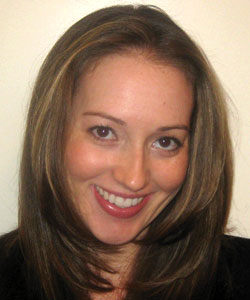 Tessa West
Tessa West
New York University
http://psych.nyu.edu/westlab
What does your research focus on?
My research primarily examines the dynamics that unfold during dyadic interactions, with a particular focus on the intergroup (e.g., cross-race) context. I study how individuals come to make sense of their partners’ behaviors, whether the inferences they make based on these behaviors are accurate, and how psychologists can shape such inferences to improve the quality of intergroup relationships. I also study basic person perception processes, and my theoretical work focuses on developing a unified approach to defining and studying accuracy in interpersonal perception.
What drew you to this line of research and why is it exciting to you?
I started studying interracial interactions during my undergraduate years at University of California (UC), Santa Barbara, and as I learned more about interpersonal perception, I became fascinated with the idea that it is possible to shape relationship outcomes by shaping what people believe about their partners’ behaviors, thoughts, and feelings, above and beyond the veracity of such beliefs. For example, I have examined questions such as, does the belief that one’s partner is similar to oneself matter more than actual similarity? I think focusing on the process of interpersonal perception provides many opportunities to develop new methods of improving interracial encounters, and in many social contexts.
Who were/are your mentors or scientific influences?
I have been incredibly lucky throughout my academic career by having such great mentors. As an undergraduate at UC Santa Barbara, I worked with Jim Blascovich, who gave me invaluable advice so early on in my career. I also worked with Wendy Mendes, Max Weisbuch, and Mark Seery, all of whom were graduate students at the time. These three individuals went out of their way to help train me and teach me how to be a social psychologist. I also worked with Nalini Ambady, who truly shaped my interests in person perception and intergroup relations. My graduate/post graduate mentors include David Kenny —who was as good as it gets as far as graduate advisors go — Jack Dovidio, Nicole Shelton, and Lou Penner. These individuals put so much effort into working with me, I will always be grateful. All of these people have also been scientific influences.
What’s your future research agenda?
I plan to continue to study interpersonal perception and behavior within the intergroup domain, but expand to new social contexts, such as the physician-patient context. In this line of work, I will focus on improving health outcomes for racial/ethnic minorities by targeting the process of communication during interactions with physicians. I also plan to extend my research on dyadic processes to examine the extent to which co-variation between two partners’ physiological states maps onto person perception processes. Lastly, in a very different vein, my ongoing and future research includes the study of how political ideology influences person perception, addressing questions such as whether conservatives or liberals are more accurate in perceiving others, and under what conditions.
What publication are you most proud of?
West, T. V., & Kenny, D. A. (2011). The truth and bias model of judgment (T&B). Psychological Review, 118, 357–378.
The article was winner of the 2012 Society for Personality and Social Psychology’s Theoretical Innovation Prize.
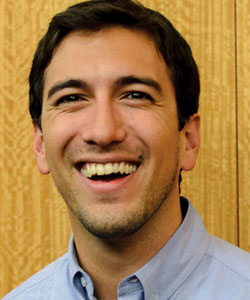 Jamil Zaki
Jamil Zaki
Stanford University
ssnl.stanford.edu
What does your research focus on?
I study the cognitive and neural bases of social cognition and behavior, but that’s not very specific! For the past several years, my research focused on empathy and social cognition: how we make sense of and respond to other minds. In graduate school, I examined what’s known as “empathic accuracy” — one individual’s ability to insightfully assess another individual’s emotional states over time. I’m still deeply interested in empathy and social cognition, but more recently, I have set my sights not only on how we think about other people, but also how we behave towards them, and specifically why people so deeply value “being on the same page” as others (interpersonal alignment), and helping others (prosociality). I approach these topics through a wide variety of techniques — including neuroimaging, game theoretic tasks, psychophysiology, and experience sampling — and do my best to “follow the phenomenon” across disciplinary boundaries.
What drew you to this line of research and why is it exciting to you?
Growing up, I lived with my mother and grandmother, who are both from Peru; I also spent summers in Lima for much of my childhood. Peruvian culture is highly collectivistic, and the emotional lives of people there are intimately tied to the fortunes and emotions of those around them. Of course, this is the case all around the world, but the interdependent psychological makeup of the Peruvian side of my family always struck me as deeply meaningful. During high school, I read An Anthropologist on Mars by Oliver Sacks and started considering what Crick called “The Astonishing Hypothesis” — that everything about us resides somewhere in the physical makeup of our brain. Although this may sound more like “The Banal Hypothesis” 20 years later, it completely blew my 15-year-old mind, and I vowed to join the world of neuroscience. In college, I asked my first neuroscience professor whether I might bring together these two interests by studying empathy in the brain; he wrote off this idea as silly, because empathy requires two people, whereas fMRI scanners can only fit one. I was swayed by this argument at the time, but have since wizened up.
The phenomena I study excite me because they seem so central to what makes us tick as a species. Humans are the world champions of understanding each other and working together, and it’s these abilities that allowed us to win the cross-species competition for global domination. At the same time, neuroscientists largely neglected these skills until the advent of “social neuroscience” in the last 10-20 years. Working as part of a new and growing field at this point in time is, to me, the best job in the world.
Who were/are your mentors or scientific influences?
Scientists’ careers are made by their relationships with research mentors, and in this respect I’ve been incredibly lucky. Kevin Ochsner was my primary mentor in graduate school, and when I started in 2005, we were both relatively new to the world of empathy research. We explored this domain together, honing our intuitions, making predictions, running studies, and repeating this cycle throughout the years. Niall Bolger was the other key member of my graduate advising team; he provided me with generous, (very) patient training in statistics, and also helped deepen my training in social psychology. Throughout this time, I also became close friends with Jason Mitchell, who later became my postdoctoral advisor. Jason is an amazingly precise experimentalist and writer, and he helped me sharpen these key skills over recent years. But more importantly than developing skills or mastering content, all of my mentors helped me model and intuit who I wanted to be as a researcher, and which scientific approaches and principles mean most to me.
What’s your future research agenda?
One of the best things about starting my own lab is that I no longer have to answer that question alone! Moving forward, much of the work I do will be inspired by the wonderful trainees in the lab. That said, some lines of research about which I’m especially excited right now include: (1) using Bayesian modeling to examine social cognition and emotion perception as rational forms of inference, (2) examining the role of empathy, interpersonal connection, and prosocial behavior in supporting healthy relationships and individual well-being, and (3) working on interventions to increase empathy within individuals, in populations with psychiatric disorders, and between groups in conflict.
What publication are you most proud of?
Zaki, J. (in press). Cue integration: A common framework for physical perception and social cognition. Perspectives on Psychological Science.
This paper represents the culmination of years of thinking about how the “building blocks” of social cognition come together to provide individuals’ with a coherent sense of others’ minds. In it, I leverage research from sensory perception to propose a broad model in which social perceivers integrate multiple social cues and processes — much like information from different senses — into a stable account of what others are feeling. This model, in turn, suggests that social cognition could be formally modeled as a form of complex inference using a Bayesian approach, work that my lab is now doing. Also, this paper includes an unusual amount of history, and prompted me to read a lot of theory pieces from the mid 20th century, during which the science of social cognition underwent a revolution. It’s incredibly gratifying to tour the past in this way, and realize (1) the speed with which our field is growing, and (2) that no matter what your big idea is, someone else probably wrote about it more eloquently in 1957.





APS regularly opens certain online articles for discussion on our website. Effective February 2021, you must be a logged-in APS member to post comments. By posting a comment, you agree to our Community Guidelines and the display of your profile information, including your name and affiliation. Any opinions, findings, conclusions, or recommendations present in article comments are those of the writers and do not necessarily reflect the views of APS or the article’s author. For more information, please see our Community Guidelines.
Please login with your APS account to comment.